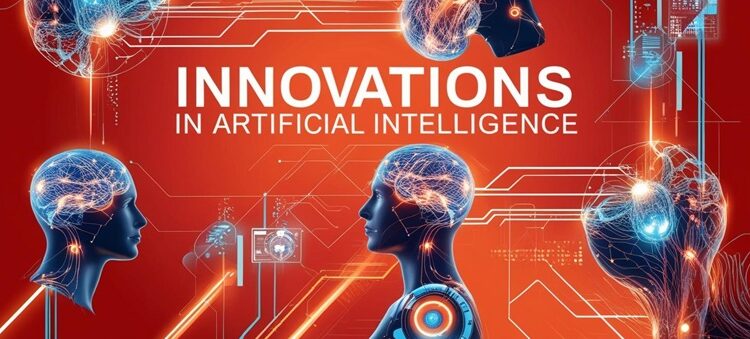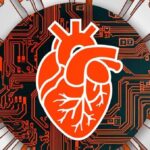Patenting AI-Based Inventions
Patent prosecution is the process of securing a patent for an invention by working with the United States Patent and Trademark Office (USPTO). This includes everything from drafting a detailed patent application to responding to office actions from patent examiners, with the ultimate goal of obtaining patent protection for innovative technologies.
The process begins with the preparation and filing of a patent application, which must clearly describe the invention and its novelty. After filing, the application is examined by the USPTO to ensure that it meets all legal requirements, including novelty, non-obviousness, and utility. During this time, applicants often work closely with patent professionals to respond to examiner objections, make necessary amendments to the claims, and navigate complex legal and technical issues to strengthen the patent application.
At our firm, we bring strong technical backgrounds across a wide range of technologies, including complex fields such as artificial intelligence (AI), computer science, and electronics. This foundation allows us to effectively support clients working on advanced and innovative developments. Whether you are developing AI-driven technologies, software solutions, or electronic devices, we provide services that ensure your intellectual property is fully protected.
We understand the intricate nature of patent prosecution in these rapidly advancing fields and offer strategic guidance to secure broad, enforceable patent rights. Our team is committed to leveraging our technical expertise to effectively represent inventors and companies in these dynamic sectors, ensuring that your innovations are protected and positioned for long-term success.
Artificial Intelligence
The following subject matter can be incorporated into patents related to AI technology:
1. Machine Learning (ML) Models and Algorithms
Novel algorithms and architectures for supervised, unsupervised, and reinforcement learning.
Techniques for optimizing training processes, such as automated hyperparameter tuning or innovative loss functions.
New approaches to transfer learning, few-shot learning, and self-supervised learning.
2. Natural Language Processing (NLP) Methods
Novel techniques for improving text generation, sentiment analysis, and machine translation.
Innovative models for named entity recognition (NER), part-of-speech tagging, and syntactic parsing.
Algorithms to enhance voice recognition systems, speech-to-text transcription, or text-to-speech synthesis.
3. Computer Vision Innovations
New methods for object detection, recognition, segmentation, and tracking in images and video.
Techniques for improving facial recognition accuracy, emotion detection, and biometric authentication.
Image enhancement and restoration algorithms, such as noise reduction, resolution enhancement, or super-resolution.
4. Autonomous Systems and Robotics
AI-based control systems for autonomous vehicles, drones, and robots.
Algorithms enabling robots to perform complex tasks, such as manipulation, navigation, and interaction with humans.
Multi-agent systems for coordinating autonomous entities or improving swarm robotics.
5. AI-Specific Hardware and Architectures
Hardware accelerators (e.g., AI-specific chips, GPUs, TPUs) designed to optimize the performance of AI models.
Neuromorphic computing architectures that simulate the functioning of the human brain for AI tasks.
AI chip design methods that optimize power efficiency, memory usage, or processing speed for edge computing.
6. AI in Healthcare Applications
Machine learning methods for medical image analysis, diagnostics, and disease prediction.
AI algorithms for personalized medicine and drug discovery, including genomics analysis and precision treatment plans.
Systems for continuous health monitoring, disease management, and early detection based on wearable sensors and AI models.
7. AI in Business, Finance, and E-commerce
AI-powered financial modeling, risk assessment, and fraud detection systems.
Predictive analytics algorithms for forecasting market trends, consumer behavior, and demand planning.
Recommender systems for personalized shopping experiences and content delivery.
8. AI Ethics, Fairness, and Explainability
Techniques for reducing algorithmic bias and ensuring fairness in decision-making processes.
Methods for making machine learning models more interpretable, transparent, and auditable.
AI-based accountability systems for tracking decision-making processes and ensuring regulatory compliance.
9. AI in Cybersecurity
AI-driven anomaly detection for identifying cybersecurity threats or data breaches in real-time.
Machine learning-based encryption and privacy-preserving techniques to secure sensitive information.
Systems for automating threat response, including adaptive defense mechanisms that evolve over time.
10. AI in Manufacturing and Industry
AI systems for predictive maintenance and optimization of industrial operations.
Robotics and automation algorithms that enhance efficiency and quality control in manufacturing.
AI solutions for supply chain management, inventory optimization, and demand forecasting.
11. Generative AI
Generative models such as GANs (Generative Adversarial Networks) for creating realistic synthetic data, images, music, or videos.
AI-based systems for content generation, from artwork and music composition to writing and video production.
Techniques for training generative models in specific creative domains (e.g., AI for fashion design, game design).
12. AI for Internet of Things (IoT)
AI models that enhance smart home automation systems and IoT device interactions.
Edge AI solutions for optimizing real-time decision-making and processing on IoT devices.
Machine learning systems that enable IoT devices to learn from user behavior and adapt autonomously.
13. AI-Driven Data Analytics
Innovative techniques for big data analytics, anomaly detection, and pattern recognition.
AI methods for real-time data analysis in areas like social media, network traffic, or sensor data.
Algorithms for automating data cleaning, preprocessing, and feature extraction for better model performance.
14. Quantum Computing for AI
AI algorithms optimized for quantum computing platforms, leveraging quantum mechanics to enhance model training.
Methods for combining classical and quantum computing resources for improved AI performance.
Quantum machine learning techniques for faster and more accurate computations in complex AI tasks.
15. AI-Enhanced User Interaction
AI systems that enable more natural and intuitive human-computer interactions through speech, gestures, or emotions.
Algorithms for improving user interface (UI) and user experience (UX) based on AI-driven behavior prediction.
Personalized virtual assistants and chatbots that learn from interactions to provide smarter recommendations.
ثبت اختراعات مبتنی بر هوش مصنوعی
پیگیری ثبت اختراع فرآیند بهدست آوردن یک اختراع از طریق همکاری با دفتر ثبت اختراع و علائم تجاری ایالات متحده است. این فرآیند شامل همه چیز از نگارش درخواست ثبت اختراع دقیق تا پاسخ دادن به اقدامهای دفتری از سوی ممتحنین ثبت اختراع است، با هدف نهایی بدست آوردن حفاظت اختراعی برای فناوریهای نوآورانه.
این فرآیند با تهیه و ثبت درخواست ثبت اختراع آغاز میشود، که باید اختراع و نوآوری آن به وضوح توصیف شود. پس از ثبت، درخواست توسط دفتر ثبت اختراع ایالات متحده بررسی میشود تا اطمینان حاصل شود که تمامی الزامات قانونی از جمله نوآوری، غیر بدیهی بودن و سودمندی را برآورده میکند. در این مدت، متقاضیان معمولاً با کارشناسان ثبت اختراع همکاری نزدیک دارند تا به اعتراضات ممتحنین پاسخ دهند، تغییرات لازم را در ادعاها ایجاد کنند و مسائل پیچیده قانونی و فنی را برای تقویت درخواست ثبت اختراع مدیریت کنند.
در شرکت ما، ما زمینههای فنی قویای در زمینههای مختلف فناوریها داریم، از جمله زمینههای پیچیدهای مانند هوش مصنوعی، علوم کامپیوتر و الکترونیک. این پایهگذاری به ما این امکان را میدهد که به طور مؤثر از مشتریان در زمینههای پیشرفته و نوآورانه حمایت کنیم. چه در حال توسعه فناوریهای مبتنی بر هوش مصنوعی باشید، چه راهحلهای نرمافزاری یا دستگاههای الکترونیکی، ما خدماتی ارائه میدهیم که اطمینان حاصل کنند که مالکیت معنوی شما بهطور کامل محافظت میشود.
ما پیچیدگیهای فرآیند پیگیری ثبت اختراع در این زمینههای در حال پیشرفت سریع را درک میکنیم و راهنمایی استراتژیک برای بهدست آوردن حقوق گسترده و قابل اجرایی ثبت اختراع ارائه میدهیم. تیم ما متعهد است که از تخصص فنی خود برای نمایندگی مؤثر مخترعین و شرکتها در این بخشهای پویا استفاده کند و اطمینان حاصل کند که نوآوریهای شما محافظت شده و برای موفقیت بلندمدت آماده است.
هوش مصنوعی
موضوعات زیر میتوانند در اختراعات مربوط به فناوری هوش مصنوعی گنجانده شوند:
- مدلها و الگوریتمهای یادگیری ماشین
- الگوریتمها و معماریهای نوآورانه برای یادگیری نظارتشده، بدون نظارت و تقویتی.
- روشهایی برای بهینهسازی فرآیندهای آموزش، مانند تنظیم خودکار پارامترهای مدل یا توابع ضرر نوآورانه.
- رویکردهای جدید برای یادگیری انتقالی، یادگیری با نمونههای محدود، و یادگیری خود-نظارتی.
- روشهای پردازش زبان طبیعی
- تکنیکهای نوآورانه برای بهبود تولید متن، تحلیل احساسات و ترجمه ماشینی.
- مدلهای نوآورانه برای شناسایی موجودیتهای نامگذاریشده، برچسبگذاری بخشهای گفتار، و تجزیه نحوی.
- الگوریتمها برای بهبود دقت سیستمهای شناسایی صدا، تبدیل گفتار به متن یا سنتز متن به گفتار.
- نوآوریهای بینایی کامپیوتری
- روشهای جدید برای شناسایی، شناسایی شیء، تقسیمبندی و ردیابی در تصاویر و ویدئو.
- تکنیکهایی برای بهبود دقت شناسایی چهره، شناسایی احساسات و احراز هویت بیومتریک.
- الگوریتمهای بهبود و بازسازی تصویر، مانند کاهش نویز، بهبود وضوح یا ابروضوح.
- سیستمهای خودمختار و رباتیک
- سیستمهای کنترل مبتنی بر هوش مصنوعی برای وسایل نقلیه خودمختار، پهپادها و رباتها.
- الگوریتمهایی که به رباتها این امکان را میدهند که وظایف پیچیدهای مانند دستکاری، ناوبری و تعامل با انسانها را انجام دهند.
- سیستمهای چندعامله برای هماهنگسازی موجودیتهای خودمختار یا بهبود رباتیک ازدحامی.
- سختافزار و معماریهای مخصوص هوش مصنوعی
- شتابدهندههای سختافزاری طراحی شده برای بهینهسازی عملکرد مدلهای هوش مصنوعی.
- معماریهای محاسباتی عصبی که عملکرد مغز انسان را برای وظایف هوش مصنوعی شبیهسازی میکنند.
- روشهای طراحی تراشه هوش مصنوعی که بهینهسازی کارایی انرژی، استفاده از حافظه یا سرعت پردازش برای محاسبات لبهای را هدف قرار میدهند.
- هوش مصنوعی در برنامههای بهداشتی
- روشهای یادگیری ماشین برای تجزیه و تحلیل تصاویر پزشکی، تشخیص و پیشبینی بیماری.
- الگوریتمهای هوش مصنوعی برای پزشکی شخصی و کشف دارو، از جمله تجزیه و تحلیل ژنومیک و برنامههای درمانی دقیق.
- سیستمهایی برای نظارت بر سلامتی مداوم، مدیریت بیماری و شناسایی زودهنگام بر اساس سنسورهای پوشیدنی و مدلهای هوش مصنوعی.
- هوش مصنوعی در کسبوکار، مالی و تجارت الکترونیکی
- مدلسازی مالی مبتنی بر هوش مصنوعی، ارزیابی ریسک و سیستمهای شناسایی تقلب.
- الگوریتمهای تحلیل پیشبینی برای پیشبینی روندهای بازار، رفتار مصرفکننده و برنامهریزی تقاضا.
- سیستمهای توصیهگر برای تجربههای خرید شخصیسازیشده و تحویل محتوا.
- اخلاق، انصاف و تبیینپذیری هوش مصنوعی
- تکنیکهایی برای کاهش سوگیری الگوریتمی و تضمین انصاف در فرآیندهای تصمیمگیری.
- روشهایی برای قابل درکتر کردن، شفافتر کردن و قابل حسابرسی کردن مدلهای یادگیری ماشین.
- سیستمهای پاسخگویی مبتنی بر هوش مصنوعی برای پیگیری فرآیندهای تصمیمگیری و تضمین انطباق با مقررات.
- هوش مصنوعی در امنیت سایبری
- شناسایی تهدیدات امنیت سایبری یا نفوذ دادهها به صورت بلادرنگ با استفاده از تشخیص ناهنجاری مبتنی بر هوش مصنوعی.
- روشهای رمزنگاری و حفظ حریم خصوصی مبتنی بر یادگیری ماشین برای ایمنسازی اطلاعات حساس.
- سیستمهایی برای اتوماسیون واکنش به تهدیدات، از جمله مکانیزمهای دفاعی تطبیقی که در طول زمان تکامل مییابند.
- هوش مصنوعی در تولید و صنعت
- سیستمهای هوش مصنوعی برای نگهداری پیشبینیشده و بهینهسازی عملیات صنعتی.
- الگوریتمهای رباتیک و اتوماسیون که کارایی و کنترل کیفیت را در تولید افزایش میدهند.
- راهحلهای هوش مصنوعی برای مدیریت زنجیره تأمین، بهینهسازی موجودی و پیشبینی تقاضا.
- هوش مصنوعی مولد
- مدلهای مولد برای ایجاد دادههای مصنوعی، تصاویر، موسیقی یا ویدئوهای واقعی.
- سیستمهای مبتنی بر هوش مصنوعی برای تولید محتوا، از هنر و ترکیب موسیقی تا نوشتن و تولید ویدئو.
- تکنیکهایی برای آموزش مدلهای مولد در حوزههای خاص خلاقانه.
- هوش مصنوعی برای اینترنت اشیاء
- مدلهای هوش مصنوعی که سیستمهای خودکار خانگی و تعامل دستگاههای اینترنت اشیاء را بهبود میبخشند.
- راهحلهای هوش مصنوعی لبهای برای بهینهسازی تصمیمگیری بلادرنگ و پردازش روی دستگاههای اینترنت اشیاء.
- سیستمهای یادگیری ماشین که به دستگاههای اینترنت اشیاء اجازه میدهند از رفتار کاربران یاد بگیرند و بهطور خودکار سازگار شوند.
- تجزیه و تحلیل دادههای مبتنی بر هوش مصنوعی
- تکنیکهای نوآورانه برای تجزیه و تحلیل دادههای بزرگ، شناسایی ناهنجاریها و شناسایی الگوها.
- روشهای هوش مصنوعی برای تجزیه و تحلیل دادهها در زمان واقعی در حوزههایی مانند رسانههای اجتماعی، ترافیک شبکه یا دادههای حسگر.
- الگوریتمها برای اتوماسیون تمیز کردن دادهها، پیشپردازش و استخراج ویژگیها برای بهبود عملکرد مدل.
- محاسبات کوانتومی برای هوش مصنوعی
- الگوریتمهای هوش مصنوعی بهینهشده برای پلتفرمهای محاسباتی کوانتومی که از مکانیک کوانتوم برای بهبود آموزش مدلها بهره میبرند.
- روشهای ترکیب منابع محاسباتی کلاسیک و کوانتومی برای بهبود عملکرد هوش مصنوعی.
- تکنیکهای یادگیری ماشین کوانتومی برای محاسبات سریعتر و دقیقتر در وظایف پیچیده هوش مصنوعی.
- تعامل کاربر بهبود یافته توسط هوش مصنوعی
- سیستمهای هوش مصنوعی که تعاملات انسان-کامپیوتر را از طریق گفتار، ژستها یا احساسات طبیعیتر و شهودیتر میسازند.
- الگوریتمها برای بهبود رابط کاربری و تجربه کاربری بر اساس پیشبینی رفتار مبتنی بر هوش مصنوعی.
- دستیارهای مجازی و رباتهای چت شخصیسازیشده که از تعاملات یاد میگیرند تا پیشنهادات هوشمندانهتری ارائه دهند.







